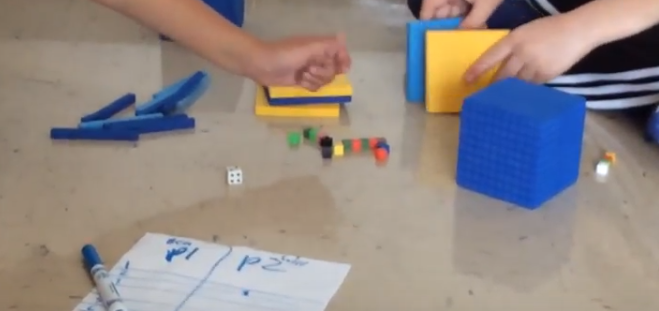Game description: Players use hands-on visual models using base ten blocks (20 units 10 longs 5 flats 2 cubes) to learn about geometry, estimation and number system concepts. Players would use a die to get access to blocks to determine which type of process they would need to solve. Then opponents guess their estimated totals for the created rectilinear. Player with the highest amount of points wins.
-
You need 2-4 players and a die.
-
Players need base ten blocks 20 units, 10 longs, 5 flats and 2 cubes
-
Player 1 will roll the dice. Let’s say he/she gets a medium question, P1 can build a rectilinear figure and have P2 guess how many units it took to built that shape. If they get it wrong the first person has to
say “I LOVE MATH!!!!!”.
-
Players have the amount of seconds (time) it says on the dice key, to look at the rectilinear figure totals and unlimited time to calculate the amount of units it took to build it.
-
Players can’t look at the blocks left over, that is CHEATING.
-
There is a 2 out of 6% chance you will get an easy, 2 out of 6% chance you will get a medium
a 1 out of 6% chance you will get a hard questions. And lastly a 1 out of 6% chance you will get a FREE PLAY. If you show your work you get 1 point
-
There is a die converter so it depends what you get, but there is EASY which you can only use one type of piece. You can choose between the cubes, the flats, the rods, and the units.
-
For MEDIUM, you can use two types of pieces. You can choose and two of cubes, flats, rods, or units.
-
For HARD, you can use any combination of as many types of pieces as you want.
-
If you get free play you get to pick whichever one you want and you have a choice to skip your turn.
- Once everyone has one turn, you go through that cycle 7 more times. The person with the most points at the end wins. If there is a tie they both win.
